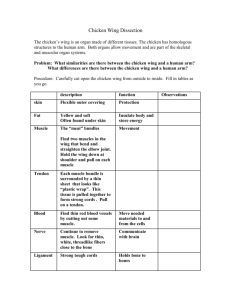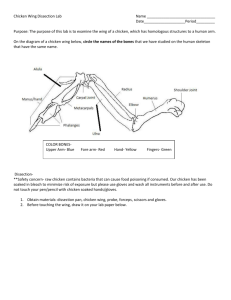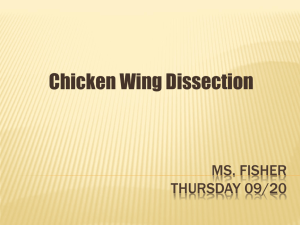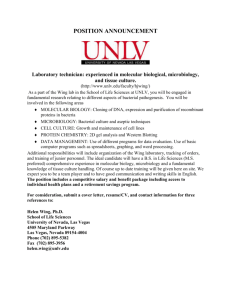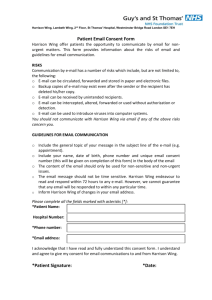Chicken Wing Dissection Lab
advertisement
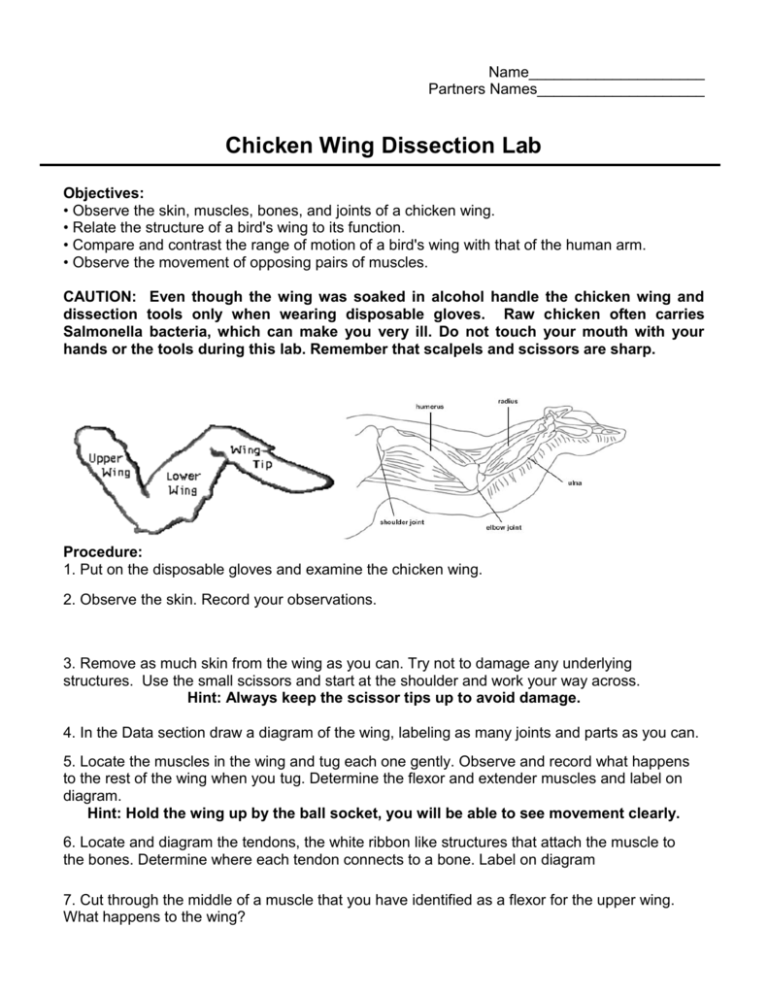
Name_____________________ Partners Names____________________ Chicken Wing Dissection Lab Objectives: • Observe the skin, muscles, bones, and joints of a chicken wing. • Relate the structure of a bird's wing to its function. • Compare and contrast the range of motion of a bird's wing with that of the human arm. • Observe the movement of opposing pairs of muscles. CAUTION: Even though the wing was soaked in alcohol handle the chicken wing and dissection tools only when wearing disposable gloves. Raw chicken often carries Salmonella bacteria, which can make you very ill. Do not touch your mouth with your hands or the tools during this lab. Remember that scalpels and scissors are sharp. Procedure: 1. Put on the disposable gloves and examine the chicken wing. 2. Observe the skin. Record your observations. 3. Remove as much skin from the wing as you can. Try not to damage any underlying structures. Use the small scissors and start at the shoulder and work your way across. Hint: Always keep the scissor tips up to avoid damage. 4. In the Data section draw a diagram of the wing, labeling as many joints and parts as you can. 5. Locate the muscles in the wing and tug each one gently. Observe and record what happens to the rest of the wing when you tug. Determine the flexor and extender muscles and label on diagram. Hint: Hold the wing up by the ball socket, you will be able to see movement clearly. 6. Locate and diagram the tendons, the white ribbon like structures that attach the muscle to the bones. Determine where each tendon connects to a bone. Label on diagram 7. Cut through the middle of a muscle that you have identified as a flexor for the upper wing. What happens to the wing? 8. Cut through the middle of a muscle that you have identified as an extensor for the lower wing. What happens to the wing? 9. Remove the muscles to expose the bones and joints. Find the ligament (the tough shiny structures connecting the bones). Draw another diagram of the wing, labeling the bones, joints, and ligaments. 10. Bend and straighten the joint and observe how the bones fit together. The shiny, white covering of the joint surfaces is made of cartilage. What is the purpose of this cartilage? What type of joint is this? How can you tell? Diagrams and Analyzing Data: Draw a picture of your chicken wing: 1. What part of a dog’s anatomy is similar to the chicken wing? 2. How many parts of a chicken wing correspond to a dog? Make a table showing them 3. Compare the movements of a chicken wing with the corresponding part of the dog’s body. What are the similarities? What are the differences? Chicken Skeleton


